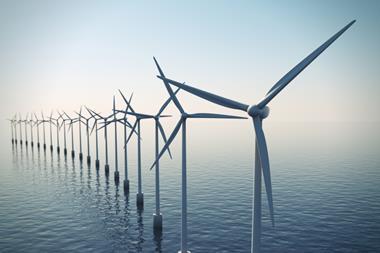Eleven major multilateral development banks (MDBs) have for the first time jointly reported on the mobilisation of private capital for infrastructure and other development investment projects.
They estimated having attracted $164bn (€151bn) of capital in 2016 from private and institutional investors such as pension funds and sovereign wealth funds. A breakdown of the sources of capital by investor type was not provided.
The report comes after the MDBs – which include the European Investment Bank, the World Bank, and the Asian Development Bank – in 2015 agreed to collect for the first time data showing how much additional private investment they generate every year.
Since then, according to the report, the MDBs have developed a framework and methodology that allows them to track, on a common basis, the private investment they have catalysed.
“This would allow us to measure private investment catalysed on a consistent basis by applying common definitions and methodologies, and to report more fully on our contributions to a range of development priorities, including climate change and infrastructure development,” the report stated. “By coordinating measurement and reporting across MDBs in this way, we will increase the transparency and accountability of our work, and identify potential gaps and opportunities to do more.”
The MDBs have agreed on how to measure the total amount of private co-financing mobilised in their operations, and its component parts of private direct mobilisation and private indirect mobilisation for most of their financial products and for direct transaction advisory services.
Private direct mobilisation involves a transactional relationship between an MDB and a client.
| All countries of operation | ||
|---|---|---|
| From private investors and other institutional investors (long-term) | Total (US$ bn) | Of which infrastructure (US$ bn) |
| Direct mobilisation | 49.9 | 7.1 |
| Indirect mobilisation | 113.7 | 61.5 |
| Total mobilisation = cofinancing | 163.6 | 68.7 |
The bulk of the $164bn of private capital estimated to have been attracted by the MDBs in 2016 was indirectly mobilised, according to the report – $114bn versus $50bn of direct mobilisation.
This went to a range of sectors, with the MDBs estimating that $69bn (42%) went to infrastructure, including power, water, transportation, telecoms, IT and social infrastructure. Private direct mobilisation for infrastructure amounted to $7.1bn.
The MDBs urged for caution in using the results because it was the first time that they have reported using the new definitions. They said that they expected to fine-tune the methodology over the years.
The MDBs also planned to investigate how they can measure and report on broader “private investment catalysation”, through activities such as support for policy reform, capacity building, “and other activities which trigger an investment response from private investors, or which open new opportunities for private investment”.
They also acknowledged that the measures they had come up with only tracked the size of financial flows, and did not measure the development impact of these flows. The MDBs measured and reported on the development impact of their operations through their “established results measurement systems”, they said.
The MDBs’ report comes amid repeated emphasis on the need for private capital to help finance the transition to a low-carbon economy and achieve other sustainable development goals. In addition, institutional investors have called for risk-sharing on infrastructure projects.
Mobilising private capital is a key feature of the European Fund for Strategic Investments, which is the flagship vehicle of the European Commission’s plan to increase investment to support the European real economy. The Commission wants to expand the fund.
The MDBs’ report can be found here.























No comments yet